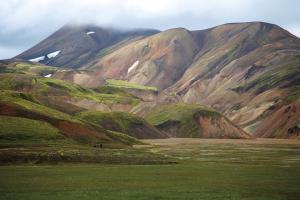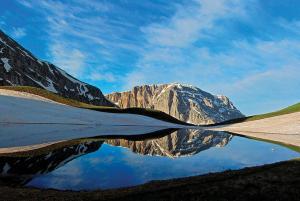Recently, Portugal has become a favourite amongst tourists, and won “Europe’s Leading Destination” in the World Travel Awards four years in a row, between 2017 and 2020. But just a few decades ago, things were quite different.
Locals and foreigners (particularly from cooler European climates) have been flocking to the Algarve’s sun-drenched, sandy beaches for package holidays since the early 70s. Back then, it was common for a humble fisherman to rent out his home during the summer whilst retreating to a small annex. A sacrifice well worth enduring for the extra income that would sustain him and his family throughout the ensuing harsh winter.
A little further north, Lisbon: the capital of what was once a global empire thriving upon Indian spices, Brazilian gold and African slaves. Had anyone ventured into the tight streets and alleys of Alfama and Mouraria (the Moorish quarters), they would have seen a display of charming decadence.
Cascais and Estoril, previously known as the Portuguese Riviera, are situated on Europe’s westernmost tip, just 30 km west of Lisbon. During the second world war, the rich and famous would come here to enjoy their glamour and lifestyle in peaceful and politically neutral surroundings.

Sintra completes Portugal’s golden triangle. A magical fairytale village situated atop a mountain. Lord Byron referred to it as “Glorious Eden” in his most famous poem Childe Harold’s Pilgrimage (1812-18).
If you were to believe the travel brochures of the time, these three regions were all Portugal had to offer for tourists.
Statistically, Portugal’s population is just over 10 million (like that of Greater London) and the country spans 90,000 square kilometres (similar to the US state of Indiana).
During the last ten years, the country has experienced a dramatic change in terms of infrastructure and, more significantly, marketing and self-promotion. Who hasn’t heard of the famous pastéis de nata (custard tarts), the Port wine lodges, or the gigantic waves of Nazaré, where fearless surfers defy the laws of nature in a bid to enter The Guinness Book of Records. Most of the iconic locations around the country are now widely known—thanks to the mass-produced travel guides that attract millions of tourists to this part of the world.
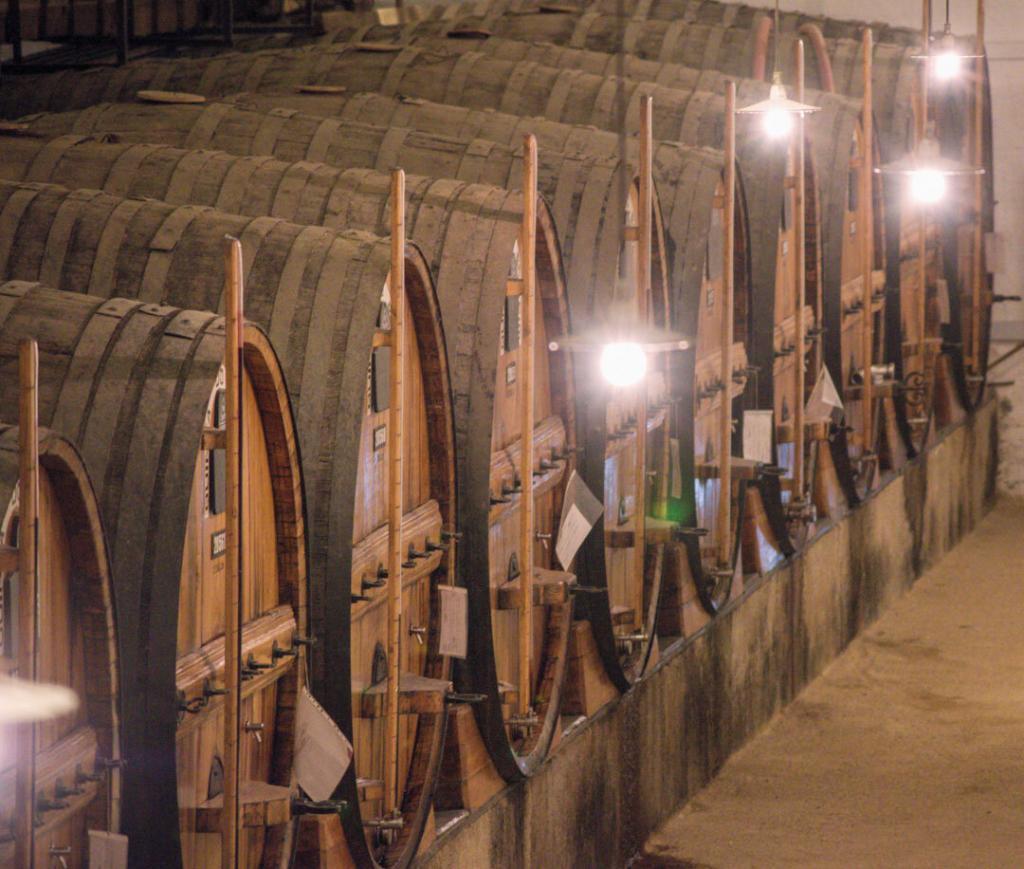
What do you say? You’re not that kind of traveller? Looking for solitude in a remote place “off the beaten track”, away from the cities and paved motorways? Searching for ancient traditions, history, local culture, and honest food cooked the old-fashioned way? Despite being a small country, you can still experience being in the middle of nowhere amidst a wild, pristine and natural environment. Simple words and the universal language of smile are all you need to get around. All you need to do is take a map or travel guide, and search for the most densely populated areas and social media hotspots. Confused? Good. Now, strike them all from your bucket list, avoid the toll motorways, and keep clear of the large towns and cities along the coast.
The further inland you go, the more you will be able to discover the other side of the country. Starting in the north, you may feel transported back to Roman, Celtic or medieval times. Their presence in the region and local traditions are numerous and indisputable. Geographically, the area was isolated from the rest of the country by mountain ranges. A feature that led to its name, Trás-os-Montes (“beyond the mountains”). Amazingly, some rural communities still live just as they did nearly half a century ago. For example, in the villages of Castro Laboreiro, high in the mountains of the Peneda-Gerês National Park, a handful of families still practice the ancient tradition of transhumance: the migration of livestock between summer and winter pastures.
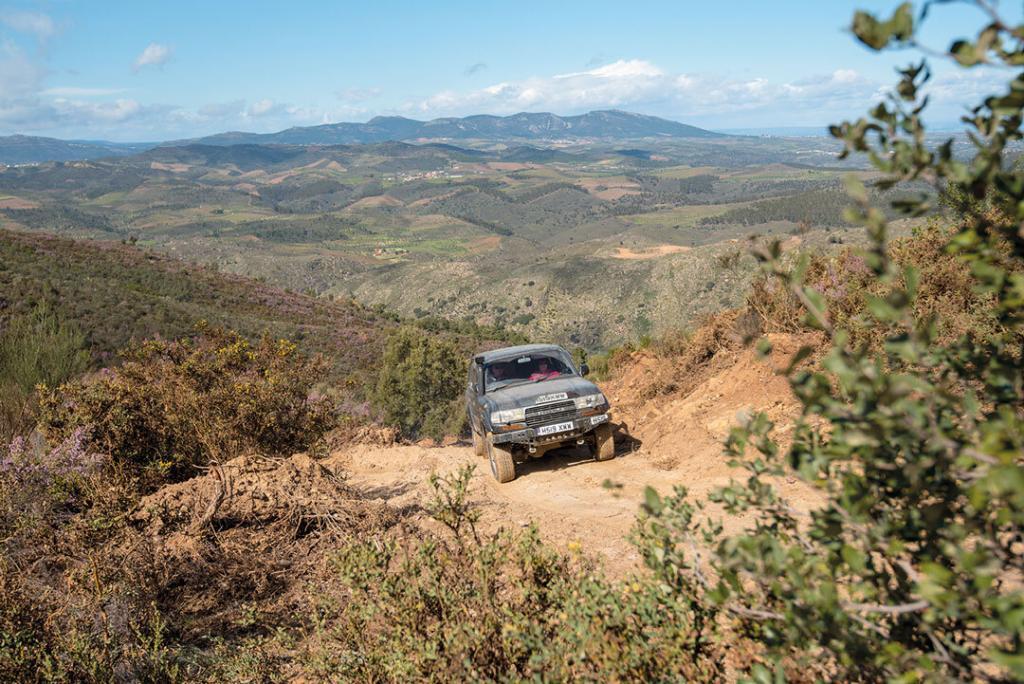
Another region known for its singular characteristic is Miranda do Douro in the northeast. Not only do they have a second official language besides Portuguese, they also play the bagpipes—a relic of their Celtic heritage. In the whole region, but especially around Bragança, the pace of life—and traditions—are still very much rooted in nature and the seasons. The use of wooden masks, and winter festivals associated with initiation and fertility rituals, are just two examples.
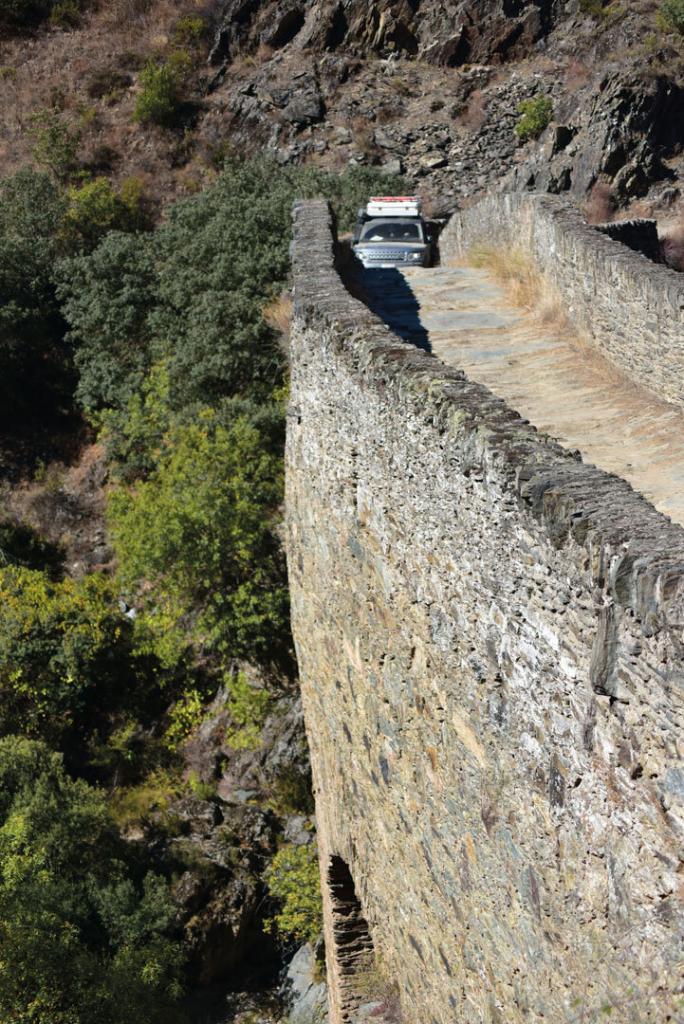
The Arabians conquered the Iberian peninsula in 711 AD, occupied the region for five centuries, and left a lasting cultural impression in the south. Having said that, one example of Arabian culinary influence which is still prepared traditionally in the north is cuscos, a 700-year-old recipe derived from the Moroccan couscous.
Heading south, Vila Nova de Foz Côa is the only municipality with two UNESCO World Heritage sites. The Alto Douro wine region, where the world-acclaimed Port wine is produced, and Prehistoric Rock Art along the Côa valley. The latter is a unique testament to human occupation since the end of the Palaeolithic period, with more than 5,000 animal rock carvings.
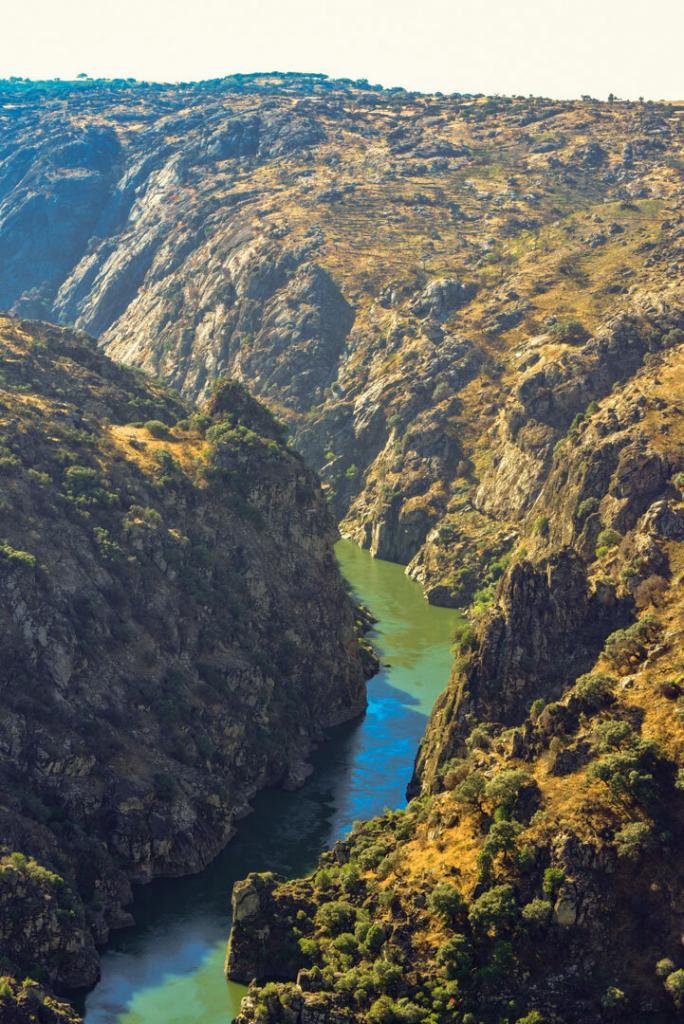
The Douro river flows to the west and separates northern from central Portugal. In the distance, the skyline is dominated by the silhouette of Serra da Estrela, the highest mountain range in mainland Portugal which elevates to just under 2,000 metres. The winters here are harsh and unforgiving. The warmer months, however, provide grazing for flocks of Bordaleira or Churra Mondegueira sheep—which produce one of the best cheeses in the country.
Geologically, Serra da Estrela and two other mountain ranges form the spine of the country. Their structures dictate the course of rivers, shape the landscape, and even influence the weather by preventing cold Atlantic winds crossing the European continent. As a natural line of defence during the invasions of the 12th and 13th centuries, the region still boasts some of the best-preserved historic villages in the country: a network of twelve landmarked villages (aldeiashistoricasdeportugal.com).

Continuing our journey south and to the east of the mountains, geography and local traditions start to change. Celtic influence gives way to Moorish heritage and hotter climates. Crossing the bridge over the Tejo river in Vila Velha de Rodão, almost feels like arriving on a different planet. Such is the contrast between the two banks. This southern province of Portugal is aptly named Alentejo, which literally means “beyond the Tejo.” Immediately, we are transported into another reality, with a slower pace of life. Long, endless backroads and expansive landscapes of the Alentejo with countless cork oaks and olive trees, invite us to follow the rhythm of nature. Castles and fortresses rising up from the hills are reminders of battles once fought here, first against the Moors and later against Spain.
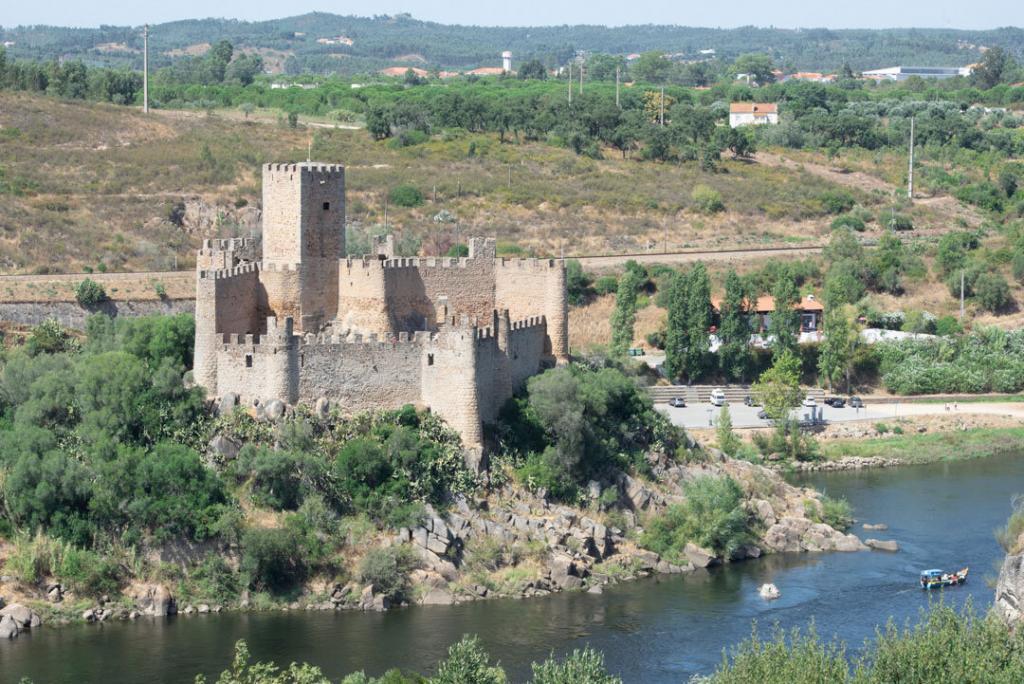
Another UNESCO World Heritage site takes us back in time to the Early Neolithic era (5500-4500 BC). Megalithic vestiges have been found in the area around Évora. This is one of the main archaeological finds of prehistoric relics in Europe. Hundreds of dolmens and menhirs scattered across the land, lend it a magical, almost esoteric feel.
The summer sun can be relentless in these nearly deserted lands, with temperatures soaring above 40° centigrade. As you might expect, the locals have long adapted to the forces of nature. Villages are planted in the landscape like big, white dots, with narrow, winding streets for more shade, thus keeping the temperatures down. Inside the houses, patios and gardens bear witness to the Arabian influence that helped shape the peoples’ way of life.
Just a few kilometres west of the Spanish border, lies Mértola [lat. Iulia Myrtilis, arab. Martulah], by far the most Moorish town in the country. The chances are, if you dig deep enough, you might find a fragment of Arabian pottery, or even the ruins of an ancient house.
The subterranean resources in this part of Portugal have been known for millions of years. Scientifically termed the Iberian Pyrite Belt, this is the largest concentration of massive sulphides in the world. Mining in the area began long before the Romans arrived.
Río Guadiana [from the Arabic Wadi (river), and Anas, the ancient name of the river] forms a natural border between the two Iberian countries. It was used by the Phoenicians and Romans as the main waterway for shipping iron ore and other metals from the local mines.
Mértola’s situation at the northernmost navigable point of the river, earned the town its title “the last port of the Mediterranean.”
Just short of the hills of the inner Algarve, the landscape could be mistaken for a part of the African savannah. But, instead of lions, wild bulls can be seen seeking respite in the shade of a solitary tree.
On the final leg toward the southern Atlantic, we stay away from tourist-packed areas and head towards the east of the Algarve. Here we can find solace in a dish of grilled octopus served with a vegetable salad. After all, the warm Levante wind is blowing from the Med.

TRAVEL TIPS
Nationals from non-EU countries need a passport, and some require visa. Check with your local Portuguese embassy or consulate.
Winters can be cold and wet, summers hot and dry. The best time to travel is from May to October. Spring blossoms are a feast for the eyes; September/October glow with those golden reddish tones from chestnut trees and harvested vines.
From camping sites to manor houses, from castles to 5-star hotels—the options are wide-ranging. In the countryside and smaller towns, search for B&Bs; many are family-run. Prices vary throughout the year; you can find good deals off-season. Accommodation is usually charged on a price-per-room basis, with
breakfast included.
Currency is the Euro. A small espresso (café) will cost you as little as €0.60, a bottle of water €1.00, a litre of diesel €1.50. Enjoy a decent meal for as little as €10.00 at a roadside restaurant. Tipping is neither mandatory nor a fixed percentage, a €2.00 coin will do just fine. Banks are generally open between 8:30 am and 3:00 pm, and ATMs (caixas multibanco) are widely available. Debit and credit cards are accepted in shops, restaurants, and public services (including
traffic fines).
Driving is on the right side of the road, and speed limits apply. Avoid toll motorways and search for small backroads to experience the real country. Driving off-road is generally permitted on public unpaved roads. Permits and permissions are required in Nature Parks and other protected areas: consult with park authorities before venturing into one of those areas. During the summer months, additional restrictions apply because of wildfires.
Portugal is a western, multicultural, multi-religious country, with influences from all over the world. The main religion is Catholicism, but there are also hundreds of churches and temples from other religions. If visiting one of these, dress appropriately and show due respect. Wherever you go, respect local customs, be courteous, try your best bom dia or obrigado, and put a smile on your face. That will open doors for you.
Portugal is a foodie’s heaven! Combine quality local produce and internationally influenced dishes with traditional culinary skills—and you have a recipe for a memorable gastronomic journey. Adhere to the slow-food movement by allowing yourself time for your meals, and don’t be afraid to try local dishes.
Portugal boasts a vast network of camping and caravanning sites throughout the territory, generally of good quality and at very competitive prices. In less populated areas, they might not be as abundant, so get a camping guide and plan your journey ahead. Wild camping and caravanning is forbidden outside the designated areas.
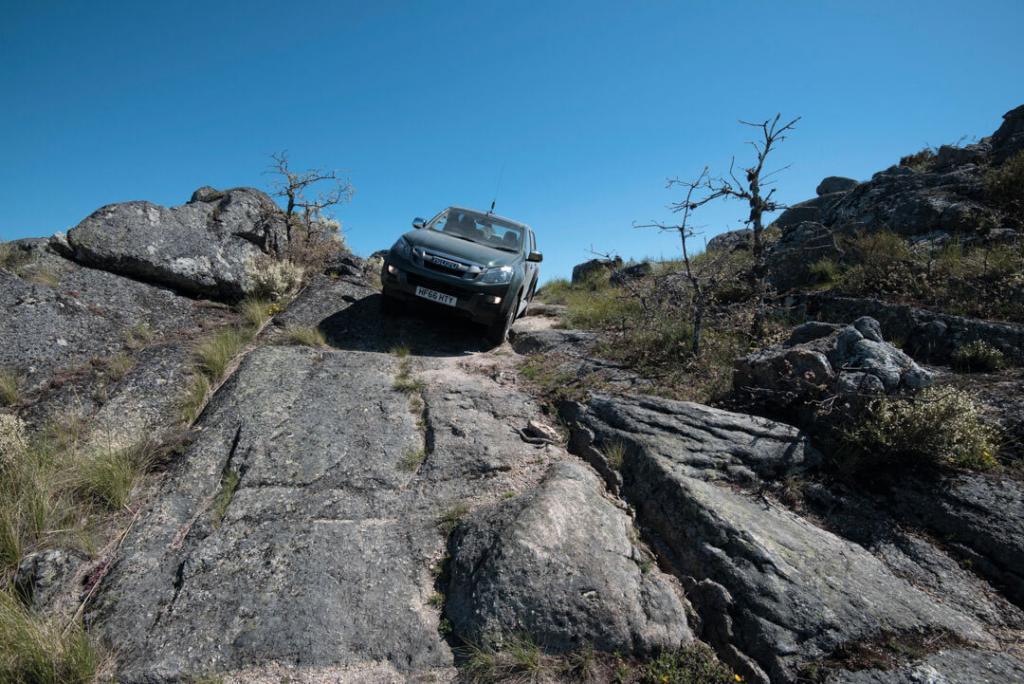
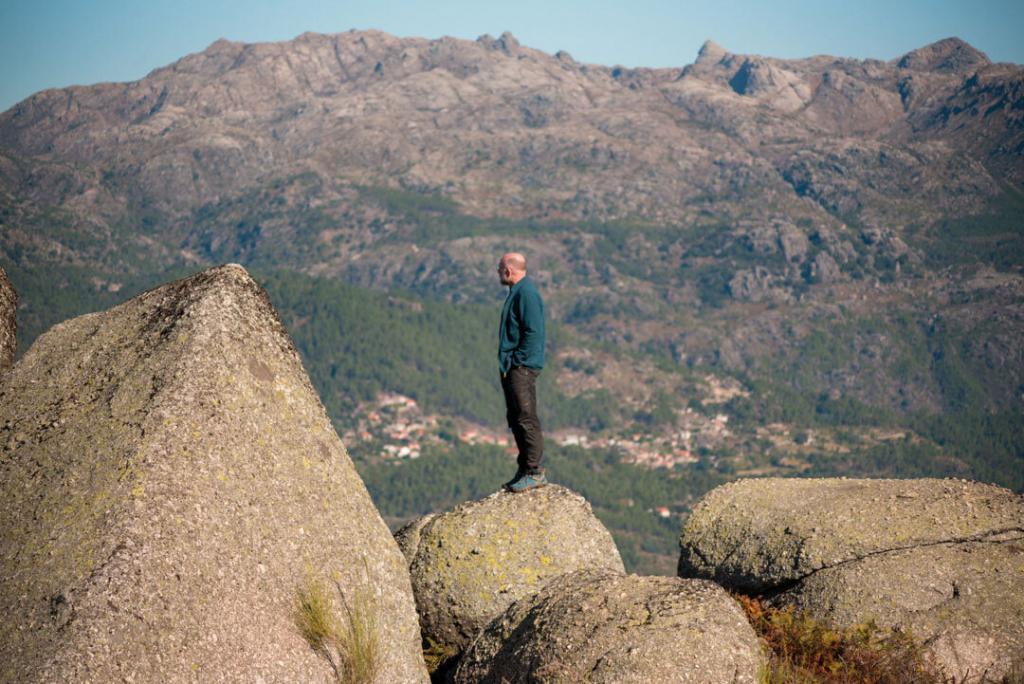
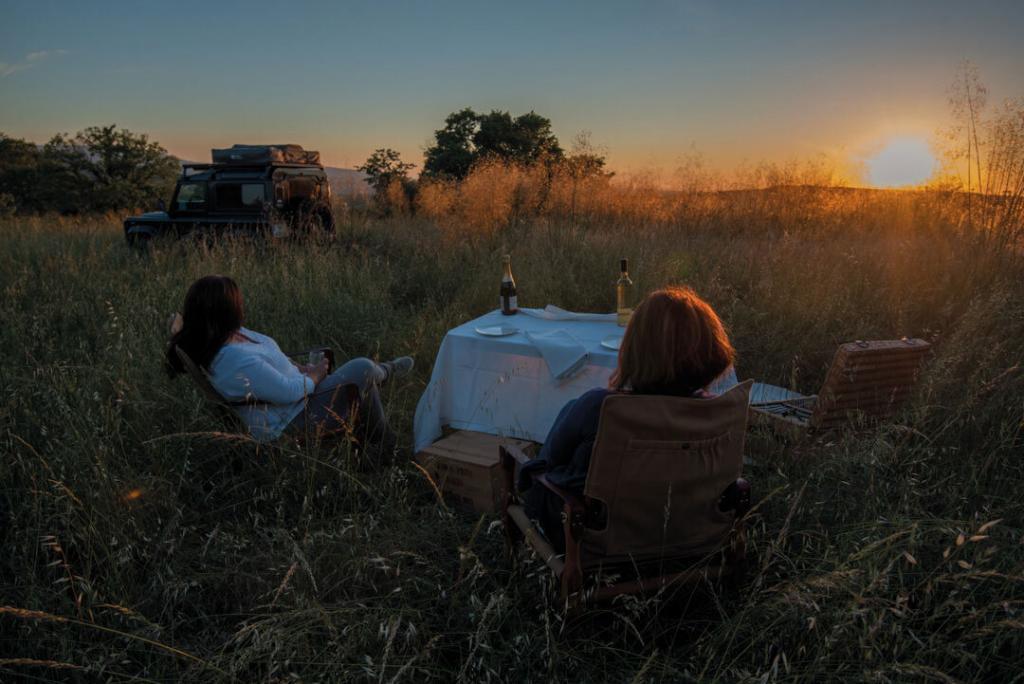
This article first appeared in the Winter 2020/21 issue of Overland Journal.



